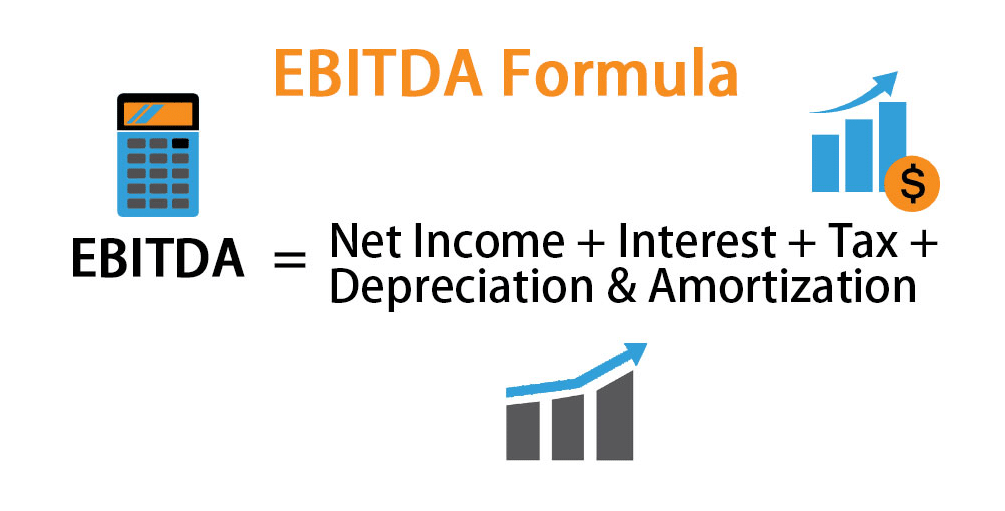What Is Ebitda Formula?
Ebitda Formula: EBITDA, which stands for Earnings Before Interest, Taxes, Depreciation, and Amortization, is a financial calculation that measures a company’s profitability before deductions that are often considered irrelevant in the decision-making process. In other words, it’s the net income of a company with certain expenses like amortization, depreciation, taxes, and interest added back into the total.
Investors and creditors often use EBITDA as a coverage ratio to compare big companies that either has significant amounts of debt or large investments in fixed assets because this measurement excludes the accounting effects of non-operating expenses like interest and paper expenses like depreciation. Adding these expenses back into net income allows us to analyze and compare the true operating cash flows of the businesses.

Ebitda Margin Formula
The EBITDA formula is calculated by subtracting all expenses except interest, taxes, depreciation, and amortization from net income.
Often the equation is calculated inversely by starting with net income and adding back the ITDA. Many companies use this measurement to calculate different aspects of their business. For instance, since it is a non-GAAP calculation, you can pick and choose what expenses are added back into net income.
For example, it’s not uncommon for an investor to want to see how debt affects a company’s financial position without the distraction of the depreciation expenses. Thus, the formula can be altered to exclude only taxes and depreciation.
EBITDA = Net Income + Interest + Taxes + Depreciation + Amortization
Formula Components
Here are five main components to the EBITDA equation.
Earnings – The acronym uses the word earnings, but it really means net profit or simply net income. This is the bottom line profit for the company found at the bottom of the income statement.
Taxes – Tax expense changes from year to year and business to business. This often depends on the industry, location, and size of the company. This figure is usually found in the non-operating expenses section of the income statement.
Interest Expense – As with taxes, interest expense varies among companies and across industries. Some more capital intensive industries are more likely to have more interest expenses on their income statement than companies in less capital intensive industries. This expense is also found in the non-operating expense section.
Depreciation and Amortization – These expenses appear in the operating expense section of the income statement to allocate the cost of a capital asset during the period and record its use.
Why Ebitda is so important?
EBITDA gives the investors a good idea of how the company is doing financially and portrays how much cash a young company generates before paying its debts. EBITDA can also be used to analyze and compare profitability among its peers as it eliminates the effects of accounting and financial decisions.
Earnings before interest, tax, depreciation, and amortization (EBITDA) is a measure of a company’s operating performance. Essentially, it’s a way to evaluate a company’s performance without having to factor in financing decisions, accounting decisions, or tax environments.
What is a good Ebitda?
Ebitda Multiple Formula
Interest is excluded from EBITDA, as it depends on the financing structure of a company. It comes from the money it has borrowed to fund its business activities. Different companies have different capital structures, resulting in different interest expenses. Hence, it is easier to compare the relative performance of companies by adding back interest and ignoring the impact of capital structure on the business. Note that interest payments are tax-deductible, meaning corporations can take advantage of this benefit in what is called a corporate tax shield.
Taxes
They are a function of tax rules, which are not really part of assessing a management team’s performance, and thus many financial analysts prefer to add them back when comparing businesses.
Depreciation & Amortization
Depreciation and amortization (D&A) depend on the historical investments the company has made and not on the current operating performance of the business. Companies invest in long-term fixed assets (such as buildings or vehicles) that lose value due to wear and tear. The depreciation expense is based on a portion of the company’s tangible fixed assets deteriorating. Amortization expense is incurred if the asset is intangible. Intangible assets such as patents are amortized because they have a limited useful life (competitive protection) before expiration.
Read Also: income statement template
D&A is heavily influenced by assumptions regarding useful economic life, salvage value, and the depreciation method used. Because of this, analysts may find that operating income is different than what they think the number should be, and therefore D&A is backed out of the EBITDA calculation.
The D&A expense can be located in the firm’s cash flow statement under the cash from the operating activities section. Since depreciation and amortization is a non-cash expense, it is added back (the expense is usually a positive number for this reason) while on the cash flow statement.
Enterprise Value-Ebitda Multiple Formula
Unlike net income, EBIDTA allows analysts to focus on the outcome of operating decisions while excluding the impacts of non-operating decisions like interest expenses (a financing decision), tax rates (a governmental decision), or large non-cash items like depreciation and amortization (an accounting decision).
By minimizing the non-operating effects that are unique to each company, EBITDA allows investors to focus on operating profitability as a singular measure of performance. Such analysis is particularly important when comparing similar companies across a single industry, or companies operating in different tax brackets.
Free Cash Flow Formula Ebitda
The EBITDA metric is commonly used as a proxy for cash flow. It can give an analyst a quick estimate of the value of the company, as well as a valuation range by multiplying it by a valuation multiple obtained from equity research reports, industry transactions, or M&A.
In addition, when a company is not making a profit, investors can turn to EBITDA to evaluate a company. Many private equity firms use this metric because it is very good for comparing similar companies in the same industry. Business owners use it to compare their performance against their competitors.
EBITDA (Earnings before interest, tax, depreciation, and amortization) formula, as the name indicates, is basically the calculation of the company’s profitability which can be derived by adding back interest expense, taxes, depreciation & amortization expense to net income. EBITDA is not represented in the income statement as a line item, rather EBITDA calculation has to be done by using the other already available items reported in every income statement.
